|
Computer Monitors:
There are many different types of computer monitors. Until a few years ago, most everyone used a CRT (Cathode Ray Tube) monitor. The CRT uses a large heavy glass vacuum tube to produce the images. Now, it's nearly impossible to find a new CRT monitor. Now everyone is buying and using LCD monitors. Early LCD monitors required that you sit directly in front of them. If you viewed it slightly off-center, the image would degrade significantly. They still suffer from that, to some degree but the new ones are much better. CRT monitors use electron beams to generate light to produce an image. In an LCD monitor, there is a backlight that produces the light. The LCD panel simply allows light through or blocks the light.
LCD Backlighting:
Several types of backlighting are used in LCD monitors. The most common have been cold cathode fluorescent tubes. There are typically two tubes, one at the top and one at the bottom. A diffuser helps distribute the light. There are also LED backlights. The LEDs are used in two ways. The cheaper monitors use them much like the cold cathode fluorescent tubes but the LEDs are likely to be around the entire perimeter instead of only at the top and bottom. The other type of lighting with LEDs has one LED for each pixel. Instead of using the LCD to block the light from the backlight, they can turn the LED off. The biggest selling point for these is the fact that they have a very high contrast ratio.
Contrast Ratio:
The contrast ratio is the difference between the lightest and darkest output from the monitor. Monitors with very poor contrast ratio can't produce black blacks. Instead, the blacks are only dark gray. The contrast ratio of most monitors is good enough for all but the most demanding users.
Aspect Ratio:
If you've seen any technical information on monitors, you've likely seen the term 'aspect ratio'. This is the ratio of width to height. Until a few years ago, the4:3 ratio was the most common. If you have a monitor with a display that is 4" wide and 3" tall, that monitor has a 4:3 aspect ratio. The newer monitors have a 16:9 ratio. It matches the ratio of movies and content produced in HD (High-Definition) format. There are other aspect ratios but those are the most common at this time (although it's getting more difficult to find video monitors and TVs in the 4:3 ratio).
Monitor Size:
Monitor size is determined by the distance between opposite corners of the display. A 19" monitor with a 4:3 ratio will have a height of approximately 11" and a width of approximately 15" . Many people are disappointed when they order a 19" widescreen (16:9 ratio) to replace their 19" 4:3 ratio monitor and the overall area of the display is much less. The biggest problem is that the height of the display is reduced. When doing most any work, there are menus on the top and bottom of the page. The shorter display leaves less for the content. To have an equivalent amount of vertical space (4:3 ratio vs 16:9 ratio), the 16:9 monitor needs to be 1.23 times larger than the 4:3 ratio monitor.
Response Time:
This is an indicator of the time it takes for the pixels to go from one state to another and back. This is important for gaming and action scenes in multimedia to prevent blurring or trailing (for bright objects). For accurate comparisons, you need to know precisely what test was used to get the rating. You may find that a monitor with an 8ms rating actually performs better than a monitor with a 5ms rating. This could be due to the fact that the 8ms monitor was tested by going from full black to full white and back to full black while the 5ms monitor's manufacturer only used a gray to white to gray test. When possible, it's best to view the monitor in person before buying it. If that's not possible, try to find reviews from people who use the monitor in the same way that you intend to use yours (gaming, etc...).
Pixel or Dot Pitch:
The term 'pixel pitch' refers to the distance between the pixels (center of one pixel to the center of the adjacent pixel). A pitch of approximately 0.25mm is very common.
In the images below, you will see an LCD monitor at various distances and magnification. At the highest magnification, you can clearly see the individual cells that make up each pixel. The following image is a partial screen-cap (capture) of an Internet Explorer help page. As you can see, only a tiny section of it is displayed. This screen cap is the actual size. The next images will be concentrating on the period at the end of the sentence. As the magnification increases, you'll see that each of the letters look as if they're made of little blocks. That's because they are. Each block is a pixel (Picture Element). These pixels make up everything we see on the screen. There are thousands (or more) of them on a typical monitor. On a common 17" LCD monitor with a 'native' resolution of 1280x1024, there are more than 1.3 million pixels (1280 make up each horizontal line and there are 1024 horizontal lines).

Here, you can start to see something a little more interesting. Each pixel is composed of the three primary colors of the 'additive' color scheme (red, green and blue). When these three colors are produced at the same levels, you get white (or gray when less than 100% of the light is allowed to pass). A monitor with a native resolution of 1024 by 768 has 1,024 RGB elements from left to right and 768 from top to bottom.
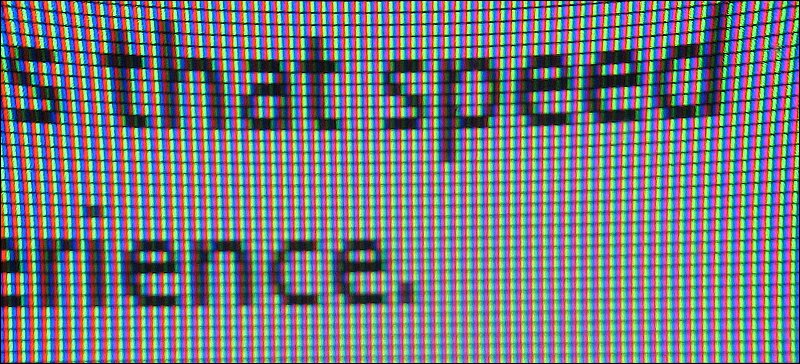
This is as tight of an image as I could get. You can clearly see the three output colors. In an LCD monitor, the three color filters allow only their respective colors through from the bright white backlight. When they all allow the maximum light through, you get white. If all allow only 50% through, you get gray. By changing the level of the individual color elements in each pixel, you can get virtually any color.
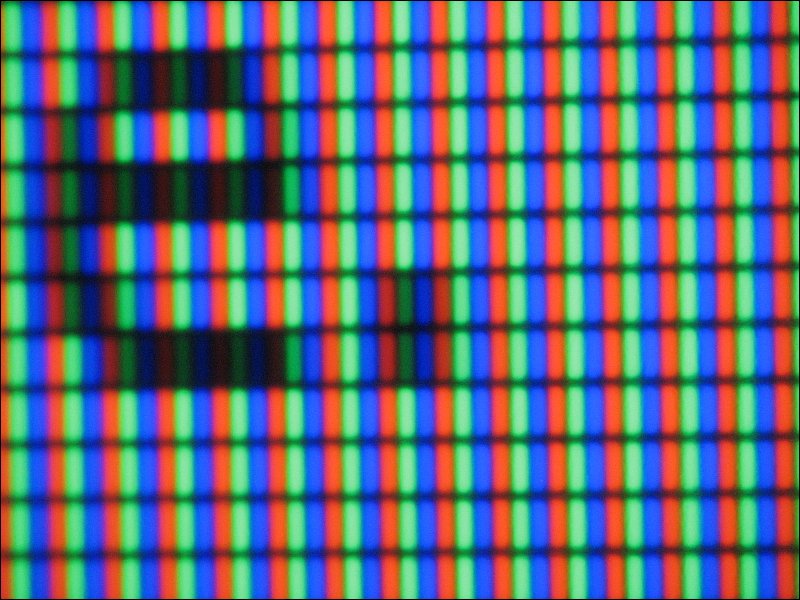
And this is the 100% crop of the photo of the period. You can see that it's two pixels tall. You'll have to excuse the quality of the image but if you look back up to the screen cap a few images up, you'll realize just how small this is.
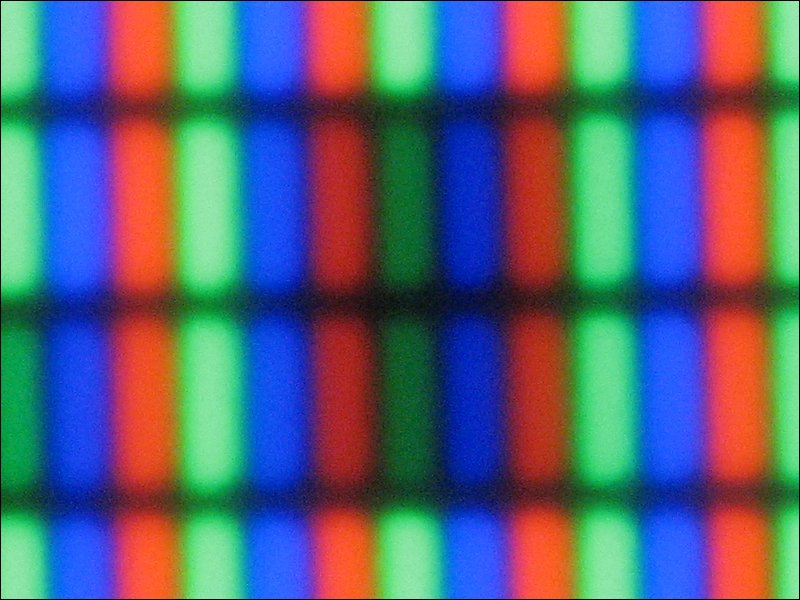
VESA Mounts:
Most new TVs and computer monitors have attachment points. For most desktop computer monitors and small TVs, the vertical and horizontal spacing will be either 75mm or 100mm. The brackets typically have either two sets of holes (one for 75mm and one for 100mm) or slots to allow them to be used with either spacing.
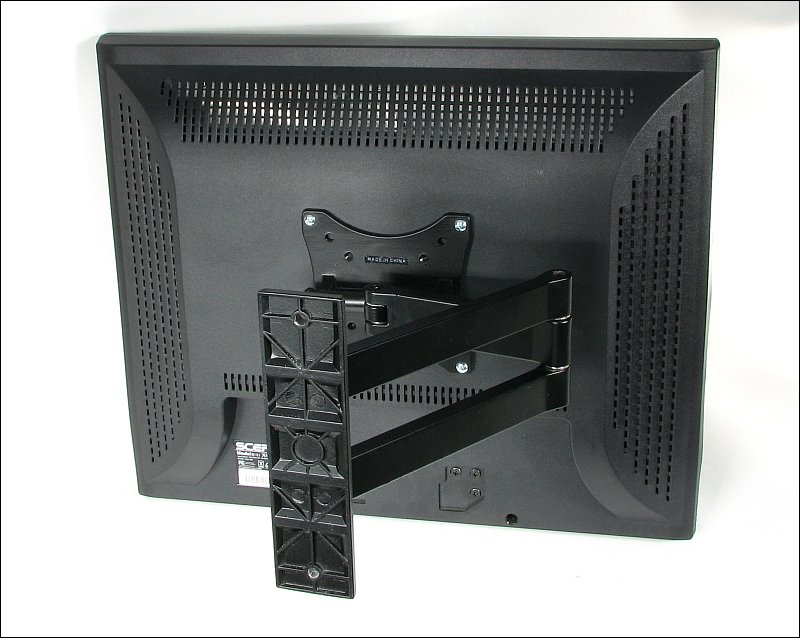
When the bracket is used to mount the monitor on the wall, you will need to remove the pedestal. Besides looking strange, the added weight will put a strain on the bracket. If you use a bracket like this and remove the pedestal, replace the screws in the holes for the pedestal. You may want to reinstall the pedestal later.
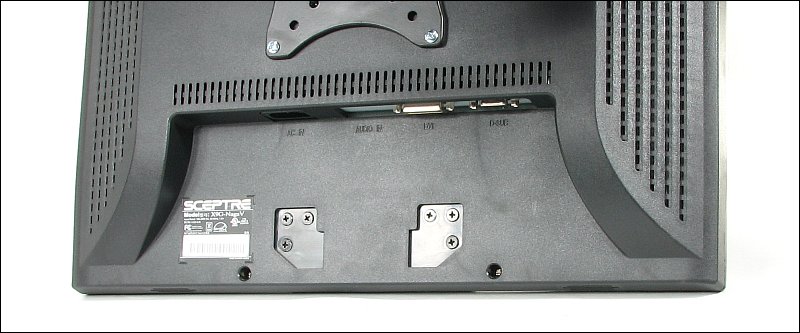
It's not always obvious that a monitor can be mounted on a VESA bracket. The monitor below has a ring covering the holes. You have to turn the ring a few degrees to remove it.
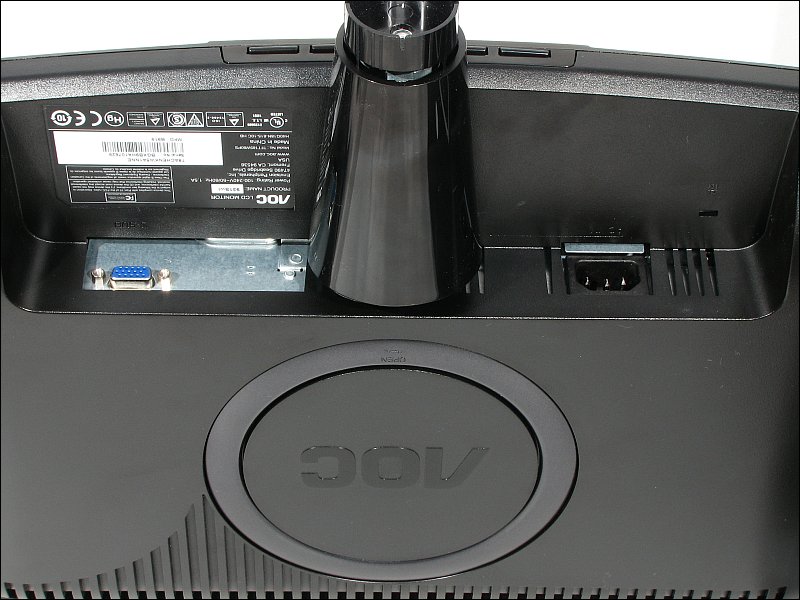
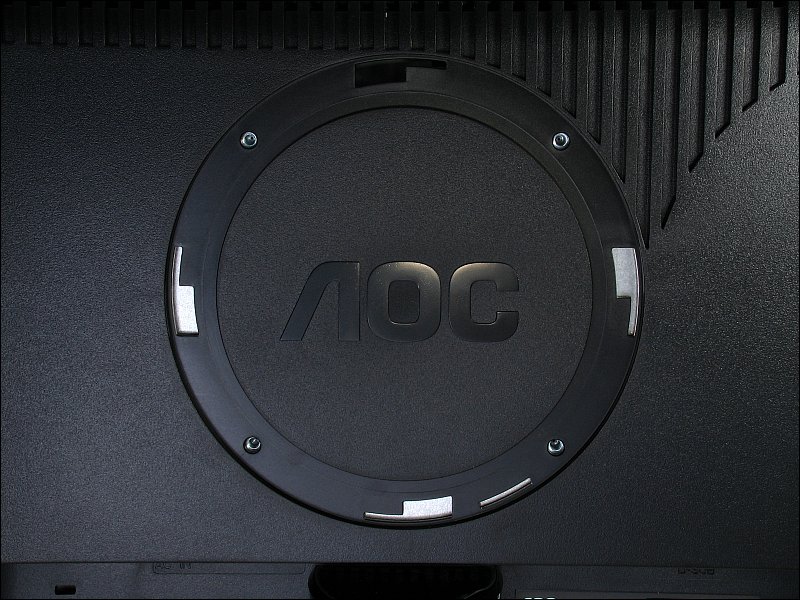
|
You May Be Interested in My Other Sites
-
This site was started for pages/information that didn't fit well on my other sites. It includes topics from backing up computer files to small engine repair to 3D graphics software to basic information on diabetes.
-
This site introduces you to macro photography. Macro photography is nothing more than the photography of small objects. It can take quite a while to understand the limitations associated with this type of photography. Without help, people will struggle to get good images. Understanding what's possible and what's not possible makes the task much easier. If you need to photograph relatively small objects (6" in height/width down to a few thousandths of an inch), this site will help.
-
If you're interested in air rifles, this site will introduce you to the types of rifles available and many of the things you'll need to know to shoot accurately. It also touches on field target competition. There are links to some of the better sites and forums as well as a collection of interactive demos.
-
This site is for those who want to install or update their car stereo. It begins with the most basic electronics theory, progresses into basic transistor theory as well as covering virtually everything associated with car audio.
|
|







